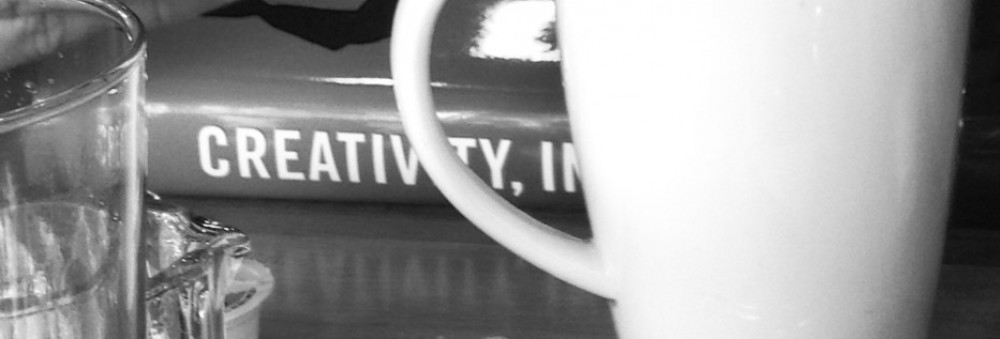“Our organizations tend to be good at what was important yesterday.” -via Creative Destruction: Why Companies That Are Build to Last Underperform the Market – and How to Successfully Transform Them
While the term “creative destruction” was first coined by Joseph Schumpter back in 1942, the pace and turbulence of change in today’s world has made it a much more prevalent and necessary reality in today’s modern organizations. In his work Capitalism, Socialism and Democracy, Schumpter described creative destruction as a “process of industrial mutation that incessantly revolutionizes the economic structure within, incessantly destroying the old one, incessantly creating a new one.” However, to make it a bit clearer for the purposes here, Investopedia defines it as “creative destruction occurs when something new kills something older.” While WhatIs.com describes creative destruction being “a process through which something new brings about the demise of whatever existed before it.”
While we may not attach the term creative destruction to it, we are seeing this demise of the old and introduction of the new happening at much more heightened and accelerated rate in today’s world. For many, creative destruction is a seen as a disruptive and divisive force to be avoided at all costs, while others see it as a natural and intentional process of evolving and transforming forward.
Foster and Kaplan share in their work Creative Destruction, “We believe that all institutions benefit from the refreshing processes of creative destruction. We also believe that the forces of creative destruction are impossible to resist in the long term.” They continue, “Failure to provide avenues for sufficient continual change – to create new options and to rid the system of old processes – eventually results in organizational failure, whether at the national, institutional, or individual level. If the forces of creative destruction are suppressed for long periods, the resulting ruptures can destroy institutions and individuals with astonishing speed and cruelty…”
In many ways, as we look at the current situation of our organizations, we see rising tensions as many forms of transformation, often spurred on by the exponential shifts of Moore’s Law and the speed of technology, try to take hold; hierarchical vs flattened, status quo vs disruption, analog vs digital, discontinuity vs continuity, steady vs agile, and fixed vs growth mindsets. Today’s leaders are awash amidst a turbulent shift from having to deal with technical problems to how to handle more adaptive challenges.
The concern is that, when faced with the rising volatility, multitude of unknowns, and heightened complexity and ambiguity of these modern challenges, we often choose to recoil back to the past (practices) or limit ourselves to either/or thinking. When in fact, we need to be investing and connecting to AND thinking. We need to be widening, not limiting the dots we are connecting. Especially if we are to continually refresh and evolve our organizations forward in new and relevant ways.
So whether we are connecting the work of Brafman, Pascale and Gutsche around Chaos, Kotter with Dual-Operating Systems, or Foster and Kaplan’s thinking around Creative Destruction, as well as the plethora of new ideas bubbling up amidst this transition into the Fourth Industrial Revolution; connecting and designing new ways and methods to improve the relevance factor of our organizations in a VUCA world will be vital to avoiding future irrelevance.
Which leads to the idea of not just creative destruction, but Creative Destruction Teams. Too often, our organizational teams are just extensions of the hierarchical, status quo, core system and do more to protect the current way of operating, than to look at more dynamic and innovative ways of moving forward. Too often our current teams are so focused on continuity and protecting the successes of the past, that we are blinded to different ways of moving forward into the future more effectively.
The problem is that the hierarchical, predictable, linear, command and control mindsets are often so entrenched in many large organizations, it is near impossible to remove or flatten current structures, especially to align with the current speed of change. Which then leads back to Creative Destruction Teams. The idea that infusing space for internal disruption allows big organizations to look at much more agile, adaptive, startup ways of thinking alongside the current core (status quo) system and begin to infuse for more creative and innovative ways of working.
In building on this idea of Creative Destruction Teams existing alongside the hierarchical, status quo teams (think Kotter’s Dual-Operating System), Salim Ismail shares in his work Exponential Organizations for “a big company to assemble a team specifically designed to disrupt itself.” For which he adds, “and charge them with the task of setting up a startup whose sole purpose is to attack the mother ship.”
Which takes us back to the idea of embracing AND.
In a world of either/or choices, we need leaders who can connect too AND thinking. Leaders who can connect this dot AND those dots, not just this dot OR that dot. Creative Destruction Teams begins the process of creating the space for AND thinking to exist in our modern organizations.
“Rather than just acting as custodians of operational excellence, and being buffeted by the winds of change, we urge corporations and their leaders to be the captains of their fate, the masters of the forces of creative destruction that shape and renew the markets into the new millennium.” -via Creative Destruction: Why Companies That Are Build to Last Underperform the Market – and How to Successfully Transform Them
